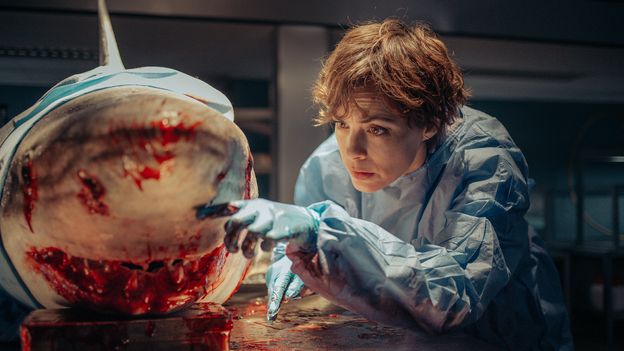Never mind Emily in Paris, Netflix viewers are currently gripped by Lilith in Paris – Lilith being the name of a man-eating mutant shark. In Under Paris, she can be seen swimming through the Seine, gobbling up anyone foolish enough to go for a dip in the river, and the idea has proven so irresistible that Under Paris is currently the number one film on Netflix. In a summer when Hollywood is struggling to attract audiences to The Fall Guy, Furiosa and its other high-profile releases, perhaps US studio executives could learn a thing or two from the French.
After all, this isn’t the first time in recent months that a smaller film that isn’t in English has shown Hollywood how it’s done. Last year, a Japanese film, Godzilla Minus One, was made at a fraction of the cost of a typical blockbuster, but was rightly acclaimed as the monster movie of 2023, and went on to win an Academy Award for its visual effects. As Caryn James said in her BBC Culture article, its stripped-down yet powerful story appealed to viewers who were tired of Marvel and DC’s over-complicated shared universes, and who wanted “entertainment, not homework”. It also hit Netflix last weekend, and was the platform’s number one film until it was dethroned by Under Paris.
Potential viewers should be warned that Under Paris isn’t up to the 30 storeys-high standards of Godzilla Minus One. It’s a pulpy B-movie whose cut-price effects and camerawork seem more suited to a TV screen than a cinema, and Lilith herself isn’t much more convincing than the holographic shark that snaps at Marty McFly in Back to the Future Part III. Still, when you’ve got the bridges and boulevards of Paris as a backdrop, your visuals are already one-up on those in most films. And the director, Xavier Gens, appreciates the importance of a startling image, however cheaply it’s rendered: blood bursting from someone’s ear as they are dragged down into the high-pressure depths off the sea; a diver’s red flare illuminating a shoal of sharks as it glides above his head. He is also careful to preserve Lilith’s mystique by keeping her off screen for most of the running time, and when she does swim into view she is often depicted as a shadow in the murky waters.
Its plotting genius
Besides, just as some sharks have to keep swimming to stay alive, Gens’s film is a lean and mean eco-thriller that doesn’t pause to take a breath. Bérénice Bejo from The Artist is admirably straight-faced as Sophia, an oceanographer who attaches tracking devices to sharks so that she can demonstrate how they have been affected by pollution. One shark is affected more than others: in the pre-title sequence, her team visits the North Atlantic garbage patch and sees that Lilith has grown from 2.5m to 7m in just a few months. Three years later, the shark is spotted in the Seine, an event which requires the breathless Bejo to say things like, “That’s impossible,” and, “That’s not normal behaviour,” before Sophia concludes that Lilith has adapted to its fresh water habitat.








